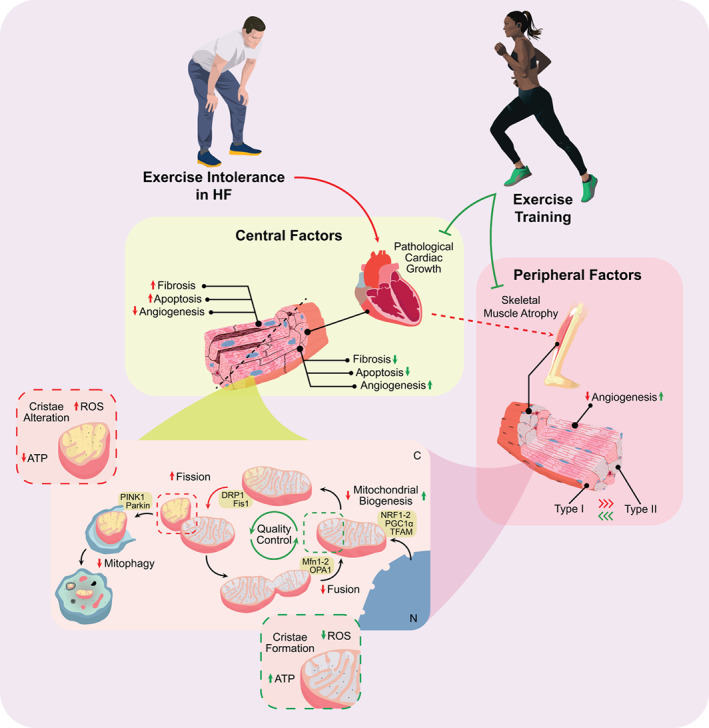Figure 2.

Mechanistic underpinnings of exercise intolerance in heart failure (HF) and the adaptive effects of exercise. Exercise intolerance can develop due to central and/or peripheral factors, which often include pathological cardiac remodelling and mitochondrial dysfunction. These processes can be attenuated by performing exercise, which causes adaptive effects in a disease setting in both cardiac and skeletal muscle. The mechanisms involved include growth signalling as well as mitochondrial quality control. Colours have been used structurally: red indicates effects in HF, green indicates effects of exercise training. Full lines indicate direct effects, dashed lines indicate indirect effects. ATP, adenine nucleotide triphosphate; C, cytoplasm; DRP1, dynamin‐1‐like protein; Fis1, mitochondrial fission 1 protein; Mfn1‐2, mitofusin 1 and 2; N, nucleus; NRF1‐2, nuclear respiratory factors 1 and 2; OPA1, optical atrophy protein 1; PGC‐1α, peroxisome‐proliferator‐activated‐receptor gamma coactivator 1‐alpha; PINK1, PTEN‐induced kinase 1; ROS, reactive oxygen species; tFAM, mitochondrial transcription factor A.
